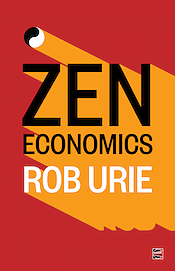A century after the seizure of power by the Bolshevik Party led by Vladimir Ilyich Lenin and Leon Trotsky, the current validity of the ideas of the Russian Revolution of October 1917 can be seen in the orientation of the struggles waged by the peoples of the whole against capitalist exploitation.
October cleared the roads to human liberation that Marxism had identified and discovered in other new ways. It led the nation to achieve great successes in economic, politics, culture, social justice and defense, to make backward Russia a world power in a short time.
October allowed the efforts and sacrifices of the peoples of the Soviet Union to reach the level of economic, military and scientific development that brought about a bipolarity of the world in which the nations of the planet could rest their hopes of progress. The United States was no exception.
In January 1919, Lenin invited the left wing of the Socialist Party of America (SPA) to join the newly-created Communist International in Moscow. In the spring of that year this wing took control of the whole party displacing its previous leadership, which was smaller and of social-democratic orientation.
From its origins, the SPA suffered attacks from several state governments and from the US federal government itself. It feared a repeat of the revolts that were taking place on European soil. In the United States, between the end of 1919 and January 1920, the “red terror” led the United States Attorney General to order the arrest of thousands of communists, with the Sedition Act of 1918 as a legal basis.
During the Great Depression of 1929, the Communist Party of the United States (CPUSA) multiplied its pacts with small union groups. The election of Franklin D. Roosevelt as president also meant the renewal of the unions and increased in them the influence of the CPUSA.
During this period, the CPUSA was distinguished by its defense of the Second Spanish Republic, a victim of the Francoist uprising that led to the Spanish Civil War (1936-1939). Leftists from all over the world joined to defend the Republic, providing funds for medical care and in many cases volunteering in the International Brigades. The CPUSA provided the first members of the Abraham Lincoln Brigade, which, in addition to supporting the Republican government of Spain, was the first military force made of US-made military force in which blacks and whites were integrated in the same ranks, with the same rights and obligations.
When the United States Communist Party (CPUSA) was formed in 1919, the Washington government had long suppressed the Socialists because they had opposed American intervention in World War I and made a campaign against military service. As of January 1920, the new target of persecution was the communists who began to be massively imprisoned. The CPUSA was forced into hiding and had to change its name several times to avoid arrest of its cadres and militants.
In the 1930s, the FBI persecuted Nazis and Communists under suspicion that they intended to launch an armed revolt against the federal government. In 1940, laws that made it illegal to hold a favorable opinion to overthrow the government came into force.
In 1941, when the United States was about to enter the world war in Europe and Japan, the Roosevelt government accused 29 members of the Socialist Workers’ Party (SWP), then political allied with the Fourth International, of sedition and conspiracy to overthrow the government. The FBI raided the offices of the SWP and formed a grand jury for the trial. The accused used the process to proclaim their socialist principles from the dock, rejected the imperialist war and refuted the presentation of the socialist revolution as a conspiracy or coup.
The United States’ entry into World War II in December 1941 forced an alliance with the Soviet Union that enabled the recruitment of communist militants into the US military. At the end of the Second World War, in 1945, and the beginning of the Cold War against the USSR, the official US “truce” with the CPUSA ended and an anti-communist psychosis was exacerbated by the alleged discovery of “Soviet espionage networks” and the denunciation of a growing power of the communists in the industrial trade union sector. Then came the McCarthy or witch-hunt period, one of the most shameful episodes in the legal history of the United States, which included the political murder of the couple Ethel and Julius Rosenberg, of sedition and conspiracy to overthrow the government a hate crime that still cries out for justice.
A CubaNews translation by Walter Lippmann.











